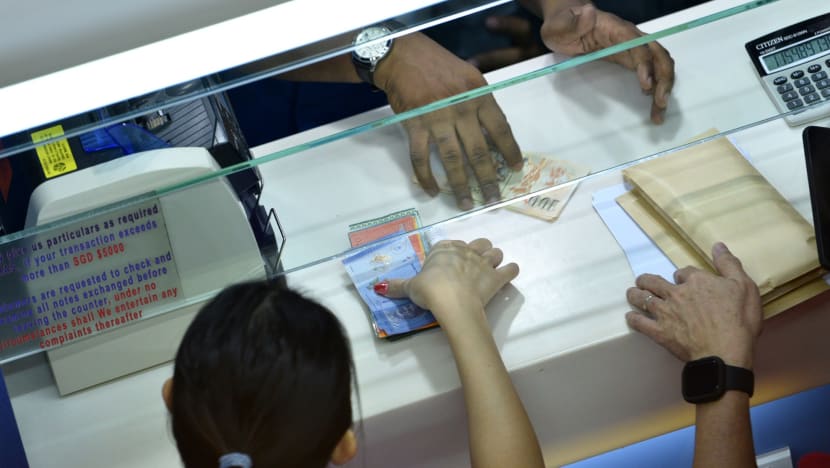KUALA LUMPUR: The Malaysian ringgit has recently fallen in value against the US dollar and Singapore dollar.
The ringgit’s performance against the US dollar fell 0.7% in the first quarter of 2022, according to Malaysia’s central bank, Bank Negara Malaysia (BNM), which was roughly consistent with the movement of other regional currencies.
Since March, the ringgit has fallen further versus the US dollar, from below RM4.20 to RM4.36 in early May.
The ringgit fell past RM4.40 versus a rising dollar on May 19, as the market anticipated interest rate hikes in the United States to battle inflation.
The ringgit also fell to a record low versus the Singapore dollar on May 24, at RM3.2068, according to Wall Street Journal data.
CNA spoke with analysts on the reasons behind the ringgit’s fall, the implications for the Malaysian economy, and the variables influencing its value.
WHY IS THE RINGGIT SO WEAK?
Professor of Economics at Sunway University Yeah Kim Leng noted that the Singdollar hit this new high because the country’s monetary strategy was built on regulating the exchange rate and enabling interest rates to freely react with foreign rates.
“Singapore’s monetary authority is likely to strengthen its currency in response to rising imported inflation.”
“Because Malaysia’s interest rate change is anticipated to be more slow than international rates,” Prof Yeah told CNA, “the narrowing interest rate differential will be reflected in a weaker ringgit.”
Mr Hafidzi Razali, a senior analyst with strategic advisory firm Bower Group Asia, said the ringgit’s weakness against the US dollar was due in part to investors pricing in larger rate hikes by the US Federal Reserve, especially with inflation in the US recently hitting as high as 8.5 percent.
Higher interest rates would reduce the amount of money in circulation and lower inflation by making loans more expensive while deposit yields are higher.
“When interest rates are raised, investors will prefer the US dollar for better yields,” Mr Hafidzi stated.
WHAT DOES IT MEAN FOR THE ECONOMY OF MALAYSIA?
According to experts, Malaysia’s weakening currency will result in increased import prices, burdening both consumers and importers.
“Imports of intermediate and capital products will become more expensive, increasing production costs while reducing capital investment and industrial upgrading,” Prof Yeah said.
Malaysian borrowers who had taken out foreign currency loans would also face increased debt servicing costs as a result of the currency devaluation, he said.
This means they’ll have to convert more ringgit into US dollars to make the same loan payments.
Mr Hafidzi pointed out that rising import costs will affect Malaysians in areas such as food, where the country is a net importer.
“The impact of both a weaker ringgit and greater inflation may constrain private consumption by reducing consumers’ purchasing power.”
“If it continues, it may have an influence on the private consumption component of Malaysia’s GDP and the country’s economic growth percentage,” he stated.
Prof Yeah stated that one silver lining was that international investors with stronger home currencies would now find it more appealing to boost their imports from Malaysia, as well as invest or acquire assets here.
WHAT HAS THE GOVT DONE?
Prof Yeah noted that in recent weeks, Malaysia’s financial authority and government have attempted to alleviate depreciation pressures.
“The quarter-point increase in the overnight policy rate by BNM on May 11 (correspondingly raising the ceiling and floor rates of the overnight policy rate corridor to 2.25 percent and 1.75 percent) has considerably alleviated depreciation pressure,” he said.
The expert also stated that Malaysia’s administration had made public the country’s continued strength in the external sector as well as the economic fundamentals backing the ringgit.










